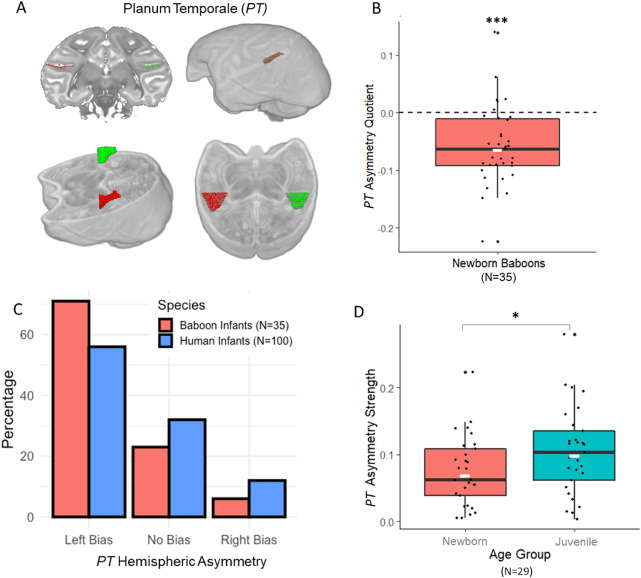
(A) MRI images of 10-day-old baby baboon brain. The Planum Temporale, an area essential for language in humans, is larger in the left hemisphere than in the right hemisphere (green) in (B) a majority of newborn baboons, and (C) in a quasi-identical proportion to human babies. (D) Longitudinal measures in an older age class (7-10 months) show that the strength of individual PT asymmetry increases with age.
Up to now, this early cerebral asymmetry has been considered as an anatomical marker of the human baby brain’s predisposition to rapidly acquire language as soon as they are exposed to it. This result suggests the hypothesis of a common language-related feature associated to PT asymmetry between monkeys and humans.
